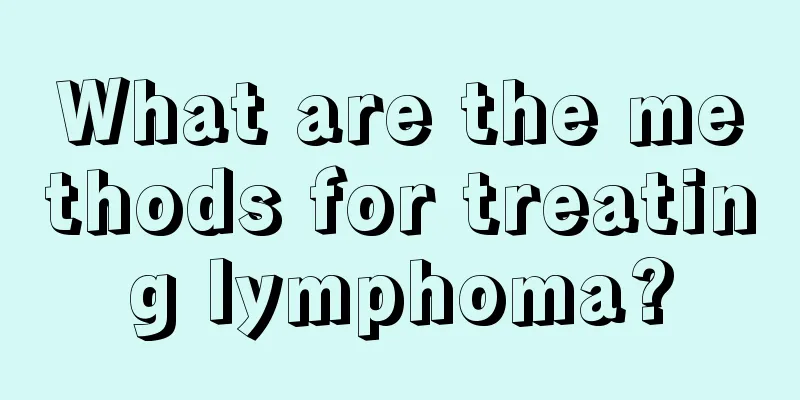Examination methods for nasopharyngeal carcinoma

|
Clinically, patients with symptoms such as retractile bloody mucus, unilateral tinnitus, hearing loss, a blocked feeling in the ear, unexplained cervical lymphadenopathy, facial numbness, diplopia, tongue deviation, tongue muscle atrophy, and headache should be carefully examined. Only through examination can the disease be diagnosed and the right medicine can be prescribed. So, what are the examination methods for nasopharyngeal cancer? As follows: 1. Nasopharyngeal endoscopy: 1) Indirect nasopharyngeal endoscopy: This is a simple, fast and effective examination method. 2) Fiberoptic nasopharyngoscope examination: This method is relatively simple, but the observation of the posterior nasal aperture and the anterior wall of the roof is not satisfactory. The posterior nasal aperture, nasal septum, posterior nasal cavity, lateral wall of nasopharynx, Eustachian tube, lateral fossa, back and posterior wall of soft palate, etc. can be observed. 2. Clinical examination: In addition to examining the nasopharynx, nasal cavity, and oropharynx, nasopharyngeal carcinoma also requires examination of the head and face, regional lymph nodes for metastasis, and all body systems. 1) Head and neck examination: The nasal cavity, oropharynx, external auditory canal, tympanic membrane, eye socket, and soft palate should be examined for outward extension of nasopharyngeal carcinoma. 2) Eyes: Common symptoms include decreased or absent vision, exophthalmos, orbital masses, and ptosis of the upper eyelid with fixed eyeball. 3) Cranial nerves: Local extension of nasopharyngeal carcinoma often causes damage to cranial nerves, thereby causing various neurological disorders in the head and face. 3. X-ray examination: X-ray examinations of nasopharyngeal carcinoma patients can help understand the extent of the tumor and the destruction of the skull base, which is helpful for staging nasopharyngeal carcinoma, formulating radiotherapy plans, following up patients and evaluating prognosis. Commonly used X-ray examinations include lateral nasopharyngeal films and skull base films. 4. Radionuclide bone imaging diagnosis: Radionuclide bone imaging is a non-invasive and highly sensitive diagnostic method. It is generally believed that the positive coincidence rate of bone scan in diagnosing bone metastasis is 30% higher than that of X-ray film, and lesions can be detected 3-6 months earlier. 5. CT examination: CT scans for nasopharyngeal carcinoma can reveal the location of the tumor in the nasopharyngeal cavity, whether the lumen is deformed or asymmetric, and whether the pharyngeal recess is shallow or blocked. In addition, it can also show whether there is metastasis outside the nasopharyngeal cavity, such as the nasal cavity, oropharynx, parapharyngeal space, submental fossa, carotid sheath area, pterygopalatine fossa, maxillary sinus, ethmoid sinus, orbit, intracranial cavernous sinus, and retropharyngeal and cervical lymph nodes. Nasopharyngeal endoscopy has outstanding value in diagnosing tiny tumors in the cavity, which are often not found by X-rays and CT scans. However, most posterior and lateral wall tumors grow submucosally and are difficult to detect by nasopharyngeal endoscopy, but can be clearly shown by lateral nasopharyngeal films and CT scans. CT scans show lateral wall tumors more clearly than X-rays. 6. B-type ultrasound examination: B-mode ultrasound examination has been widely used in the diagnosis and treatment of nasopharyngeal carcinoma. It is simple, non-invasive and well accepted by patients. In nasopharyngeal carcinoma cases, it is mainly used to examine the liver, neck, retroperitoneum and pelvic lymph nodes to understand whether there is liver metastasis and lymph node density, whether there is cysticity, etc. 7. Magnetic resonance imaging examination: Since magnetic resonance imaging (MRI) can clearly show all levels of the skull, cerebral grooves, gyri, gray matter, white matter, ventricles, cerebrospinal fluid ducts, blood vessels, etc., the SE method can be used to display T1 and T2 extended high-intensity images to diagnose nasopharyngeal carcinoma, maxillary sinus cancer, etc., and to show the relationship between the tumor and the surrounding tissues. Since MRI can determine the tumor boundary more clearly and accurately, it is very useful for positioning the radiation field of radiotherapy. At the same time, MRI examination is very helpful in understanding brain damage after radiotherapy. 8. Serological diagnosis: Since the level of EB virus antibodies in the serum of NPC patients is significantly different from that of patients with other malignant tumors and healthy people, it can be used as an auxiliary diagnosis method for NPC. It is mainly used in: 1) patients with NPC symptoms, such as retractile bloody nasal discharge, tinnitus, hearing loss, headache, cervical lymphadenopathy, facial numbness, diplopia, etc.; 2) patients with cervical lymphadenopathy confirmed as metastatic cancer by pathological biopsy or neck mass puncture, to help find the primary lesion; 3) serological epidemiological survey of people in areas with high incidence of NPC. IX. Pathological diagnosis: The final diagnosis of nasopharyngeal carcinoma is based on pathological diagnosis. Although clinical symptoms, signs, X-ray, CT and serological diagnosis suggest nasopharyngeal carcinoma, a definitive pathological diagnosis is still required. There are several methods for taking biopsies of nasopharyngeal carcinoma: 1) Oral bite biopsy (most commonly used method) 2) Transnasal nasopharyngeal biopsy 3) Fine needle aspiration of the nasopharynx 10. Differential diagnosis: An auxiliary diagnostic method for comparison with various types of lesions. This is the end of the introduction to the examination methods for nasopharyngeal cancer. I hope the above content can help everyone. Once you suffer from nasopharyngeal cancer, don’t worry too much and go to a regular tertiary hospital for correct treatment. |
<<: Do patients with nasopharyngeal carcinoma need to undergo radionuclide examination?
>>: What is the examination method for nasopharyngeal carcinoma
Recommend
What will happen if I have small Sanyang_What will happen if I have small Sanyang
If we find symptoms of hepatitis B, it is mainly ...
The top ten most delicious snacks in the world
Snacks play a relatively important role in our di...
What diseases can be treated with hot compress with large salt?
Big salt is a common type of salt in real life. F...
How long is the survival time for stage 4 lung cancer with multiple metastases
The survival time of patients with stage 4 lung c...
Be superstitious about painless abortion and beware of breast cancer
As we all know, breast cancer is closely related ...
Could there be a lot of bacteria in leftovers?
In China, many people have the habit of eating le...
What are the best ways to treat gray hair?
Gray hair is very familiar to many people. Genera...
Can osteosarcoma be cured?
Osteosarcoma, once discovered, will harm the pati...
Causes of cholecystitis
For patients with cholecystitis, the most painful...
How to choose the right pillow
As people's health awareness increases, they ...
What is the difference between vitamin b1 and b2
There are many types of vitamins in the human bod...
What are the symptoms of pancreatic cancer recurrence
Pancreatic cancer is a type of cancer that is dif...
Which hospital do you usually go to for the treatment of esophageal cancer
Which hospital do you usually go to for the treat...
My anus is a little swollen, what's going on?
Many people have to sit all day long due to work,...
How to bandage a wound
When our body is hurt and we are injured, we must...









